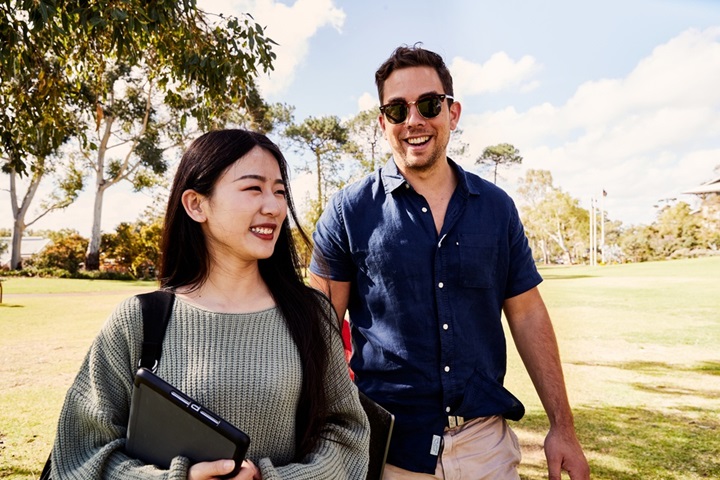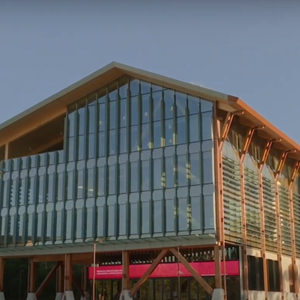Farmland
By studying at the School of Veterinary Medicine, you’ll gain a one-of-a-kind experience on our working farms.
Alongside our staff, you’ll work on farms in 3 locations – our 51-hectare vet farm (located at our Perth campus), the 40-hectare Mundijong Farm and the 80-hectare Mardella Farm.
You’ll work with breeder cows, sheep, horses, pigs, alpacas and goats and learn animal handling and clinical examination techniques, as well as perform breeding soundness examinations and pregnancy diagnosis.
You’ll get access to the animal handling facilities, a cattle feedlot, a fish health unit, grain silos and fodder storage facilities, so you can take your theoretical classroom learnings and apply them in a practical environment.
Surgery and laboratory teaching facilities
Throughout your veterinary degree, you’ll receive high-quality skills training in our suite of surgery and laboratory teaching facilities.
This includes a large sterile surgery room, a viewing area, a surgical preparation area and facilities for animal anaesthesia.
The surgery and laboratory teaching facilities are used for a number of classes, including anaesthesia, medical examinations, animal handling and surgery, to ensure you’re career ready when you graduate.
Clinical skills laboratory
Practice clinical skills across a variety of species in our clinical skills laboratory.
You’ll learn through innovative training techniques, including virtual reality modules combined with manual task kits. This will help you to develop your skills for a range of tasks, including:
- assembling anaesthetic machines
- suturing and surgery techniques
- venous catheterisation
- injection administration
- hoof testing.
Veterinary Anatomy Museum
At the core of any veterinarian’s training is the understanding of animal anatomy. To complement our anatomy classes, our Anatomy Museum allows you to examine and understand animals inside and out.
The museum features various specimens including equine, bovine, porcine, canine and feline, as well as body systems, such as cardiovascular and nervous systems.
The taxidermy specimens are preserved using different techniques including wet mounts, where dissections are preserved with a water solution to maintain their appearance, as well as plastinated specimens, where a resin has replaced water from the tissues. You’ll also be able to study internal cavities with a range of acrylic corrosion casts of blood vessels, and a large number of articulated skeletons and bones.
The Animal Hospital at Murdoch University
The Animal Hospital is a fully-functioning veterinary hospital located at our Perth campus, where you’ll apply classroom theory to real clients and patients.
You’ll work with household pets, exotic animals, farm animals and horses in a variety of settings. You will also benefit from studying alongside our staff, who include registered veterinarians as well as specialists in:
- radiology
- anaesthesiology
- emergency and critical care
- pathology
- internal medicine
- surgery
- equine medicine and surgery
- production animal medicine
- theriogenology.
The Animal Hospital also features some of the latest diagnostic equipment, including digital radiography, fluoroscopy, ultrasound, 1.5 Tesla MRR and an 80 slice CT. Endoscopic, arthroscopic and laparoscopic capability across large and small species is also featured.

